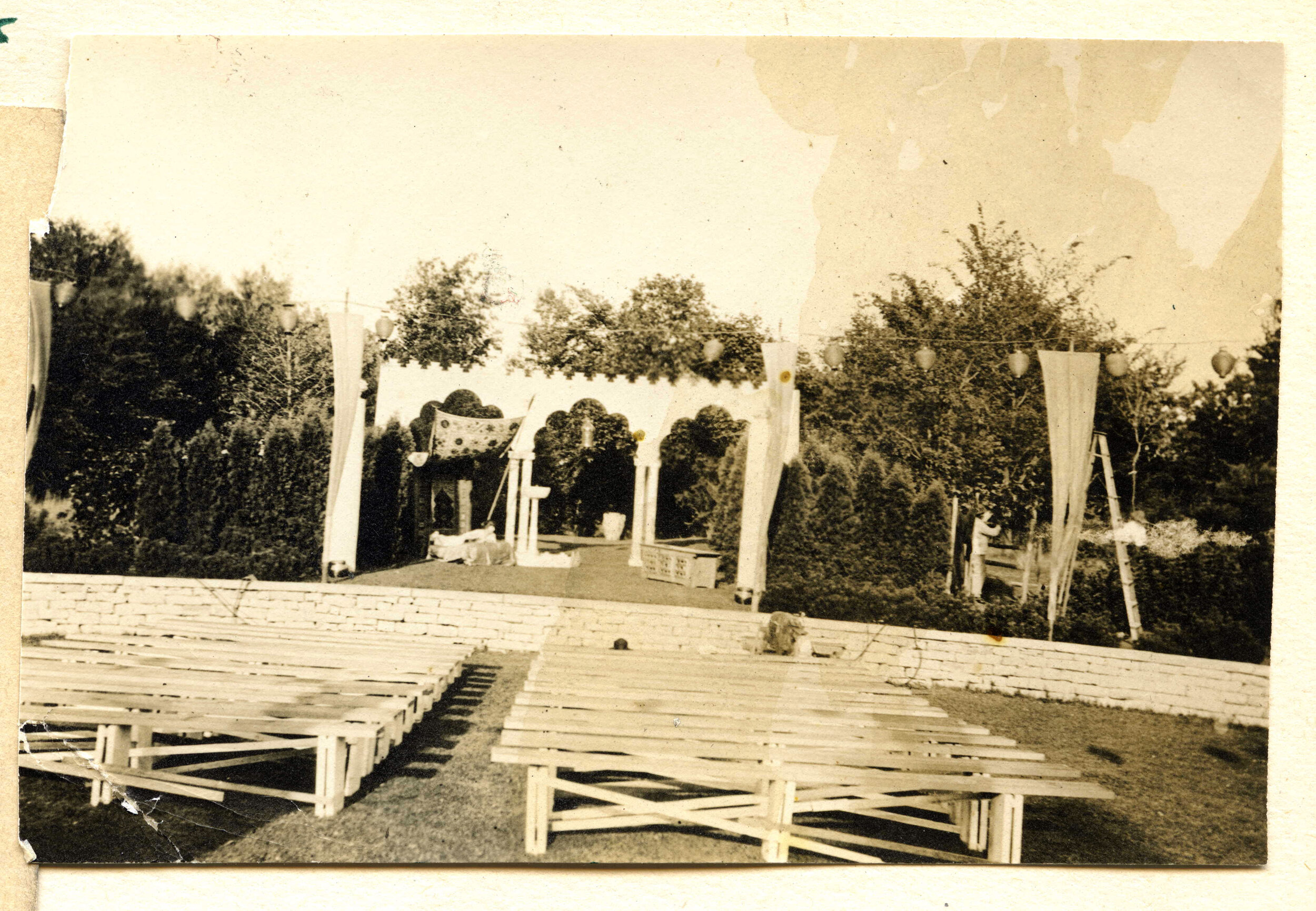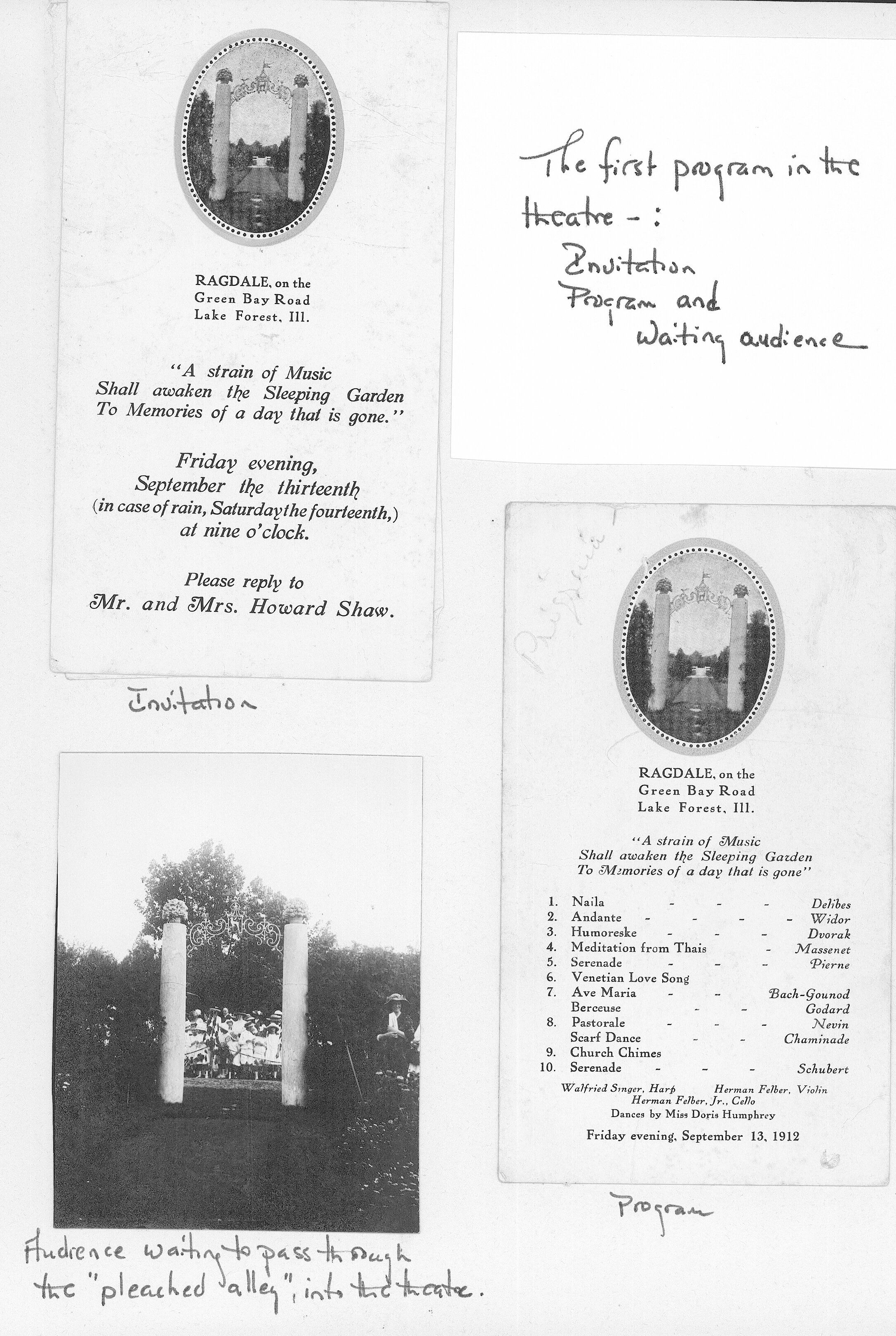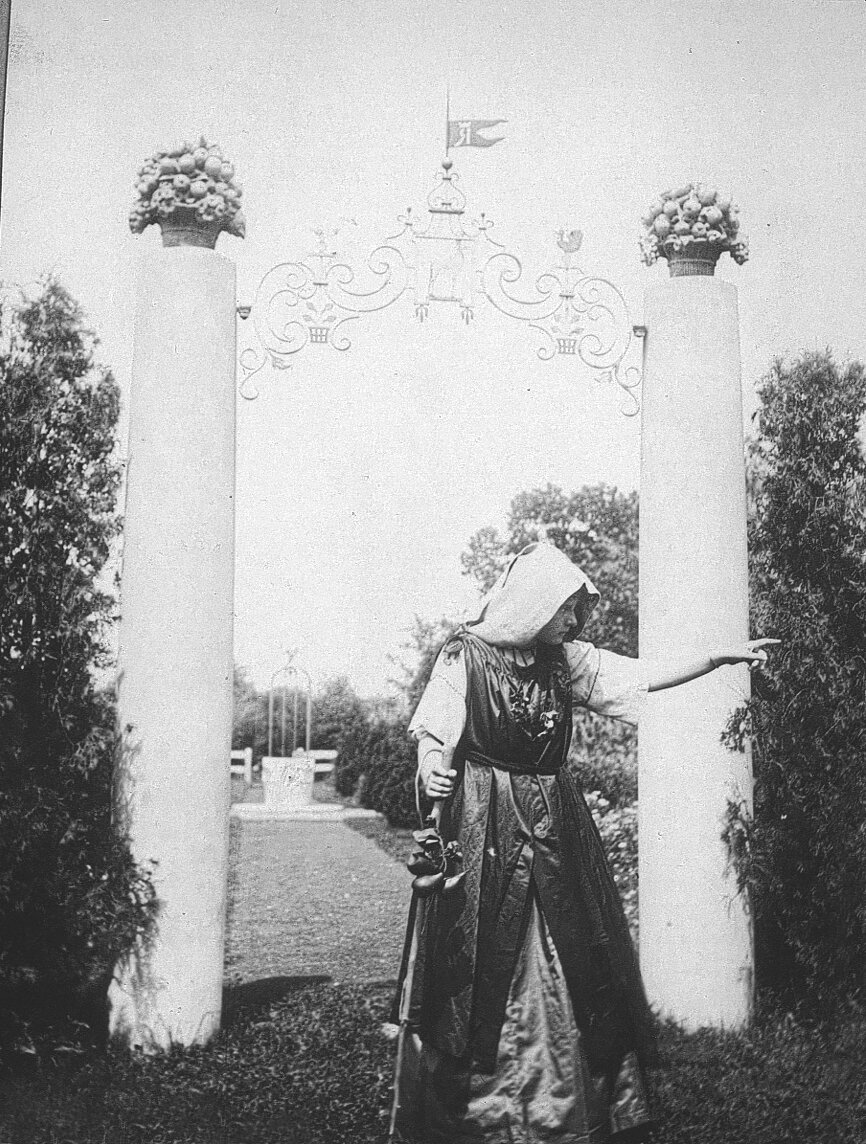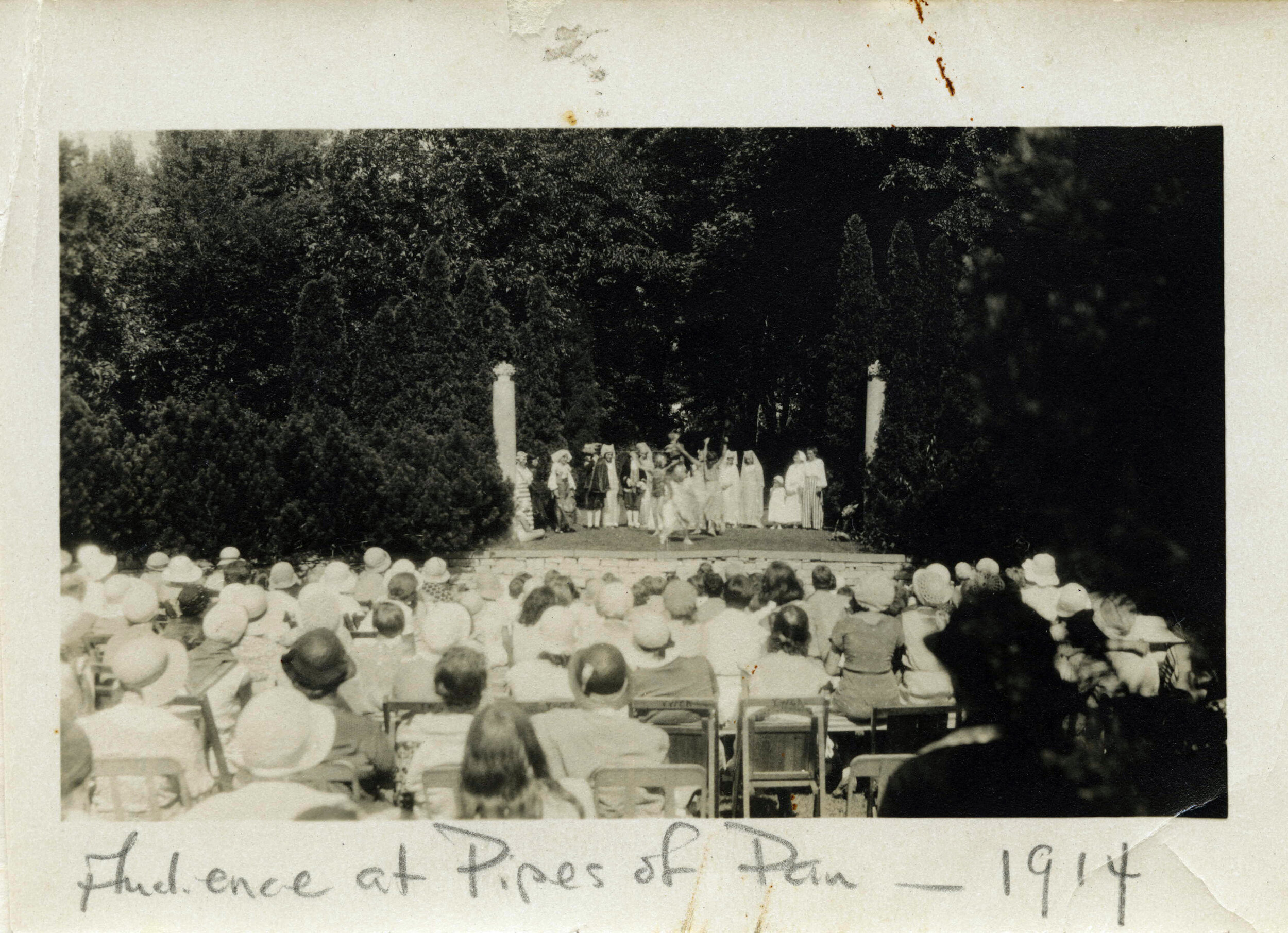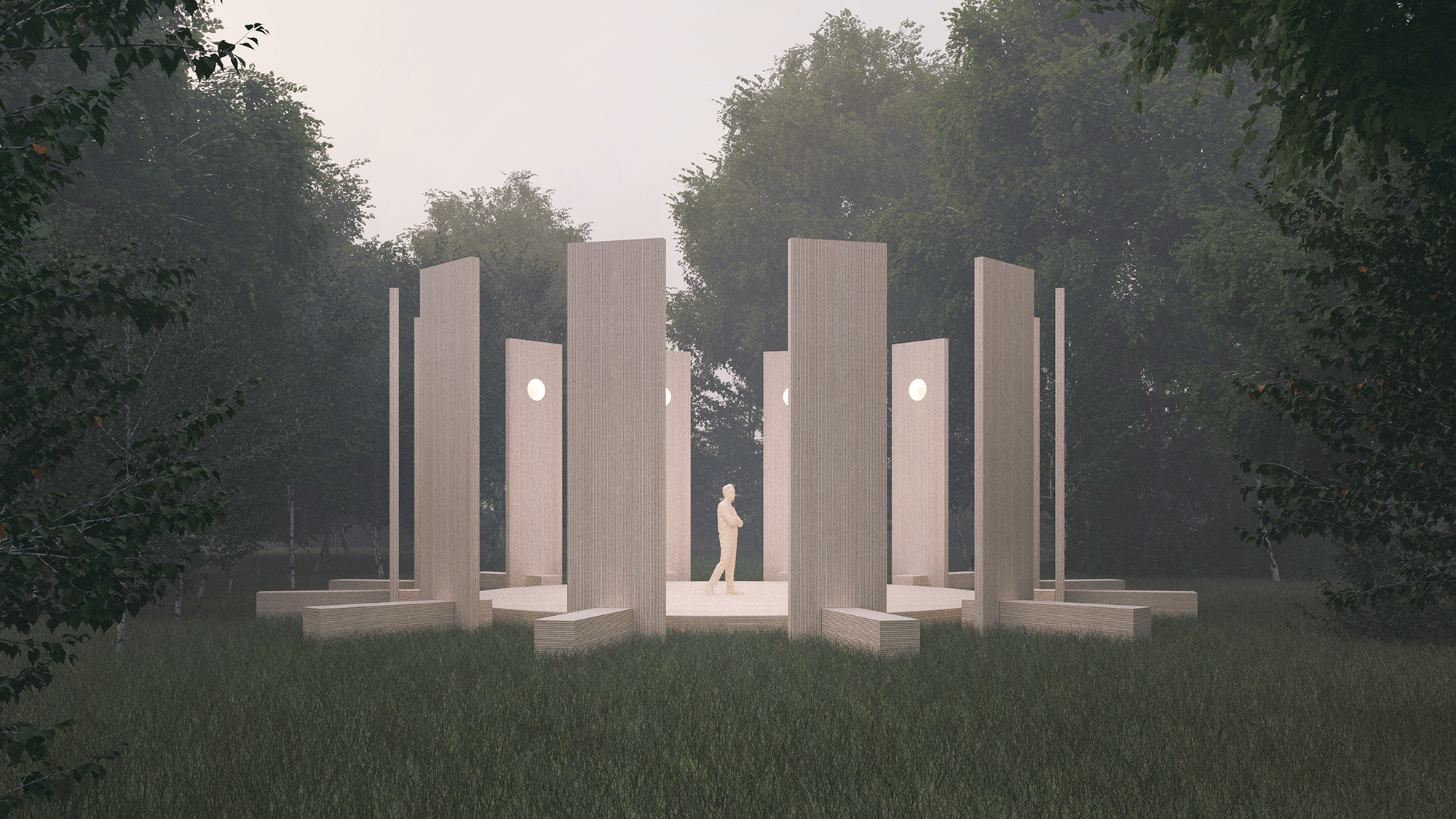
2023 Ragdale Ring
Garden Room Table Room
by: DRAWINGS
The winning entry to the 2023 Ragdale Ring competition goes to Garden Room Table Room, designed by DRAWINGS.
DRAWINGS’ winning proposal for the Ragdale Ring adapts the formal, spatial, and social characteristics of a table surrounded by chairs. Influenced by artist Carrie Mae Weems’ “Kitchen Table Series” in which Weems presents the table and chairs as a setting for the performance of daily life, the design proposes a sculptural installation enabling multiple scales of interaction between each of the resident artists as well as formal performances for larger audiences.
The most notable feature of the design to be built by DRAWINGS is the abstracted and exaggerated proportion of each chair. The unusually tall backs confer a sense of theatricality and drama to visitors while simultaneously producing an intimate spatial condition that can be modified depending on the event or size of the audience.
DRAWINGS will travel to Lake Forest, IL for an 18-day residency during which they will build and document their design. Many of the duo’s speculative collaborations challenge normative material and typological trends in architecture, expand architecture’s influence in addressing cultural and environmental issues through physical form, and produce objects meant to engage and subtly provoke.
Daniel Garcia and William Smith founded DRAWINGS in 2020 while pursuing their Master in Architecture degrees at the Harvard Graduate School of Design. This bi-coastal partnership, split between Brooklyn, NY and Portland, OR, was always intended to operate out of two very different contexts in order to leverage their unique advantages. The geographical, cultural, and spatial distinctions between these locales create the conditions for a dynamic dialogue around design. DRAWINGS embraces the inherent potential found in contrasting elements and ideas.
Daniel and William followed the Ragdale Ring competition for several years before deciding to submit a proposal. The 2023 brief, “Theater of the Intimate”, particularly resonated with them. When they heard the goal was to produce an intimate space for exchange between visiting artists similar to the salons of the 17th and 18th centuries, they thought “this is the right year to submit”.
For more information about DRAWINGS, you can check out their website: https://drawings.studio/ and their instagram @drawings.dwgs
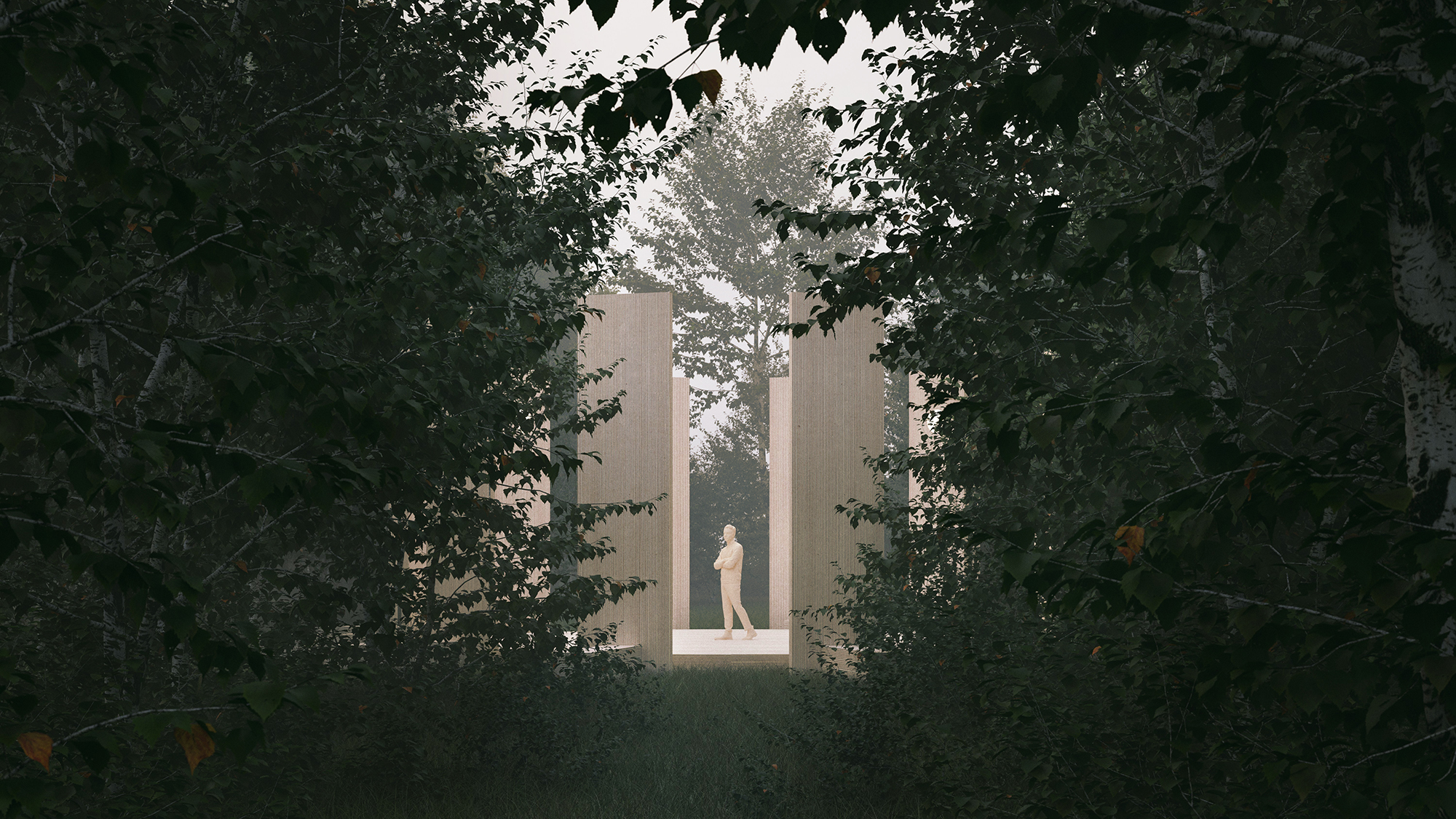
Now in its 11th year, the annual Ragdale Ring competition returns to the site of the original 1909 outdoor stage designed by architect Howard Van Doren Shaw and built for his poet and playwright wife, Frances. With Ragdale’s recent acquisition of the former home of Evelyn Shaw and John T. McCutcheon, 2023 presents a unique opportunity to reunify not only the three family homes on campus, but also the way audiences experience artists’ work.
Only remnants of the curved stone wall of the original Ragdale Ring exist, with the house covering the majority of the intended seating area. The façade of the house overlooks what would be the grassy stage and is flanked by tall trees on three sides, creating a more enclosed feeling than previous Ring designs. While the shift from previous competitions may appear to move towards a reduced scale, the potential for opportunities through its use by current residents, students, and visitors is expanded. This new location offers designers a chance to showcase a return to the creative work of artists on an intimate level, akin to the salon-style sharing of presentations, readings, and performances of artist cohorts during their residencies.
The chosen theme for 2023 is Theatre of the Intimate.
2023 FINALISTS
Sublime by Sasha Topolnytska Studio
Holding Pattern by JE-LE + PAL
The Site
The historic Ragdale campus is nearly 7 acres and features two main houses, open lawn areas (both flat and sloping), and views of the Shaw Prairie.
Garden Room Table Room will be located in the original Ragdale Ring footprint.
History of the Ragdale Ring
Architect Howard Van Doren Shaw designed the original 1912 Ragdale Ring as an outdoor theatre to accommodate the plays of his wife, Frances. Audiences of over 200 to 300 guests sat on Shaw-designed benches in a circular orchestra paved with grass and surrounded by a low limestone wall. The raised stage featured wings formed by evergreens and columns topped with baskets of stone fruit. During performances, banners and Japanese lanterns were displayed around the theater. Shaw also crafted a sophisticated lighting system with tiers of floodlights and spotlights as well as many of the theater’s props and costumes.
